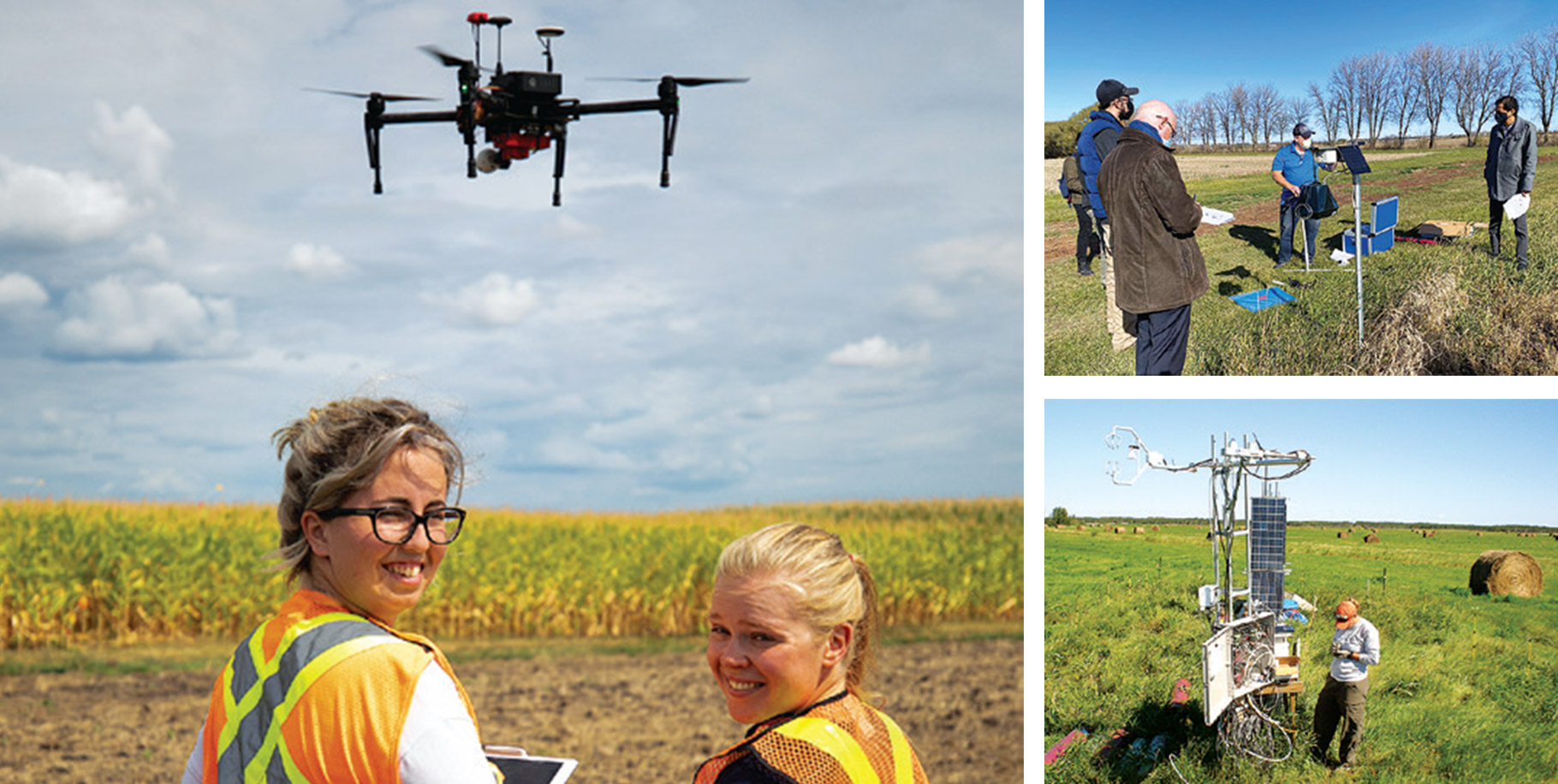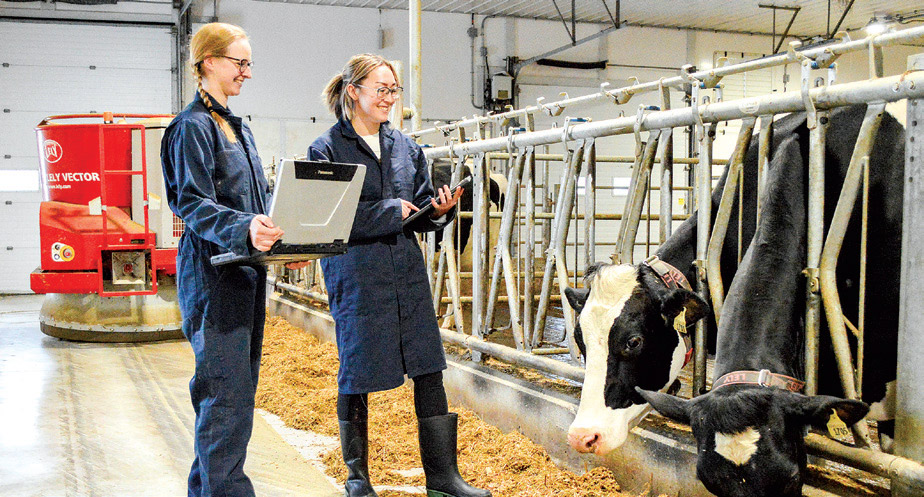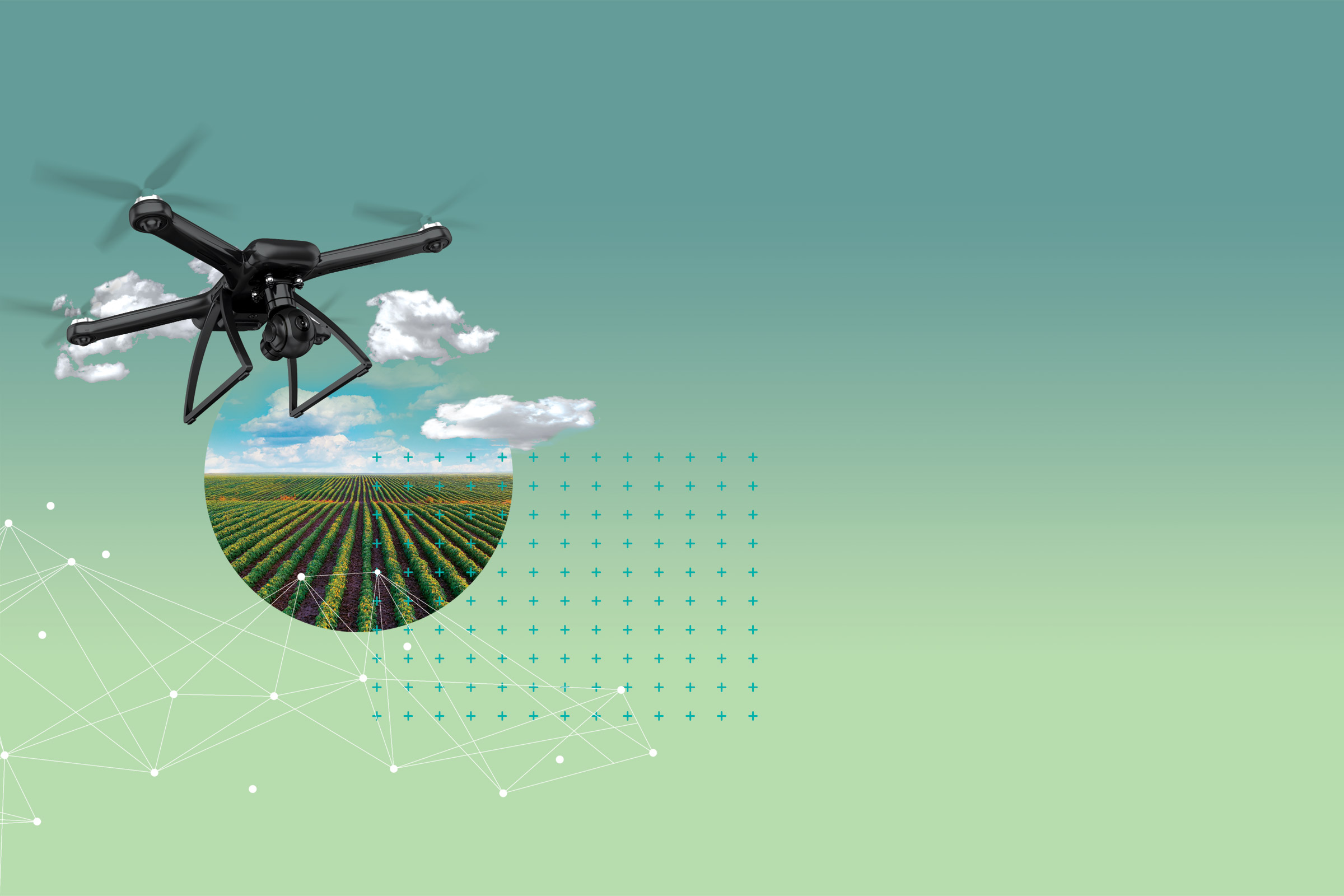UM Today | ResearchLIFE | Transforming agriculture
May 17, 2022 —
The University of Manitoba Faculty of Agricultural and Food Sciences has received $5 million in funding to help achieve its goal of becoming one of North America’s top crop research training institutions. Half of the matching funds come from Prairies Economic Development Canada (formerly Western Economic Diversification Canada). The money will be used to advance research and training for students and the industry in digital smart farm technology, faculty officials said.
The funding will primarily go toward purchasing advanced precision equipment for use both in the field and the laboratory. It will support an ambitious plan by the faculty to be a leader in digital agriculture technology by 2026, said faculty dean Martin Scanlon.

Martin Scanlon, Faculty of Agricultural and Food Sciences Dean
Digital technology is already sweeping the industry in what some call a revolution in farming and the faculty aims to be at the cutting edge of the movement, said Scanlon.
“We’re already up there, based on the kind of expertise we have and the kind of research output we produce,” he said. “But we’re in what some people call a fourth industrial revolution associated with data, sensors and digital analysis tools. If those kinds of tools are available to our researchers, who already have a good grounding in agricultural sciences, I don’t see any reason why we can’t attain that aspiration by 2026.”
“Agriculture is now heavily dependent on innovation — machine learning, artificial intelligence, gathering and trying to become more efficient and resource effective in providing healthy and ample food for the world.”
Farming is becoming increasingly data-driven and the faculty’s initiative seeks to develop data-based technology to help producers make better management decisions, added Nazim Cicek, the faculty’s associate dean of research.
“The agri-food sector in Canada and globally is moving toward utilizing more technology,” Cicek said. “Agriculture is now heavily dependent on innovation — machine learning, artificial intelligence, gathering and trying to become more efficient and resource effective in providing healthy and ample food for the world. To feed the future world and make sure it’s done in a sustainable way, we need to be smarter. We don’t have another planet. We don’t have more soil. We have to become smarter in using those resources. That’s where technology comes in.”

A number of farmers are already using digital technology to generate field work data. But a lot of that data just sits in monitors on tractors without the ability to review it, analyze it and use data layers to watch crops developing in real time. That’s where this new technology comes in, said Cicek.
“We didn’t used to get data back from the field in real time and use it to make different decisions. That has only recently become possible because we now have cheaper and more effective wireless technology to gather all that data and make sense of it. There’s reams and reams of information that can come to a computer from these sensing tools and provide a producer with real time feedback. That’s really the key.”
Scanlon agreed, saying data alone is not particularly helpful to farmers faced with making management decisions.
“You can have streams of data but they may not mean anything to you. It’s just data,” he said. “But if you have innovative analysis techniques, the data can be used to make real-time decisions, like when to spray or not to spray, that makes it useful.”
Cicek stressed that analyzing data to grow crops is only part of what digital technology can do for the agri-food industry. He said it can be applied to make better decisions all the way along the supply chain from the field to the dinner plate.
“All decision-making has to be informed by data. Previously it was done by observation and personal experience”
So far, much of the hype surrounding digital agriculture involves crop production. But things are starting to happen on the livestock side, too. For example, the faculty recently hired a new animal science researcher who is using big data and modern molecular biology techniques to understand what happens when animals ingest particular feed rations and how that leads to better health and feed conversion.

State-of-the-art Dairy Farmers of Manitoba Discovery and Learning Complex, located at the Bruce D. Campbell Food and Farm Discovery Centre.
“All decision-making has to be informed by data,” said Cicek. “Previously it was done by observation and personal experience. Now we’ve improved it by bringing in new imaging technology on agricultural machinery, drones, or satellites, which are linked to computers and smart Phones — things that farmers didn’t have previously. That information should empower them to make better decisions.”
However, Scanlon cautioned that not all tools, even if promising, actually deliver the goods. He said the job of applied science researchers is to “separate the wheat from the chaff” to determine which tools are ready to be deployed and which ones need to go back to the laboratory for further work.
Curtis Rempel, vice-president of crop production and innovation for the Canola Council of Canada, said “One potential barrier to the spread of digital technology is proprietary data capture systems by hardware and software manufacturers. For widespread adoption a farmer needs the ability to move data across platforms, from weather stations to machinery. Any data that’s been collected but can’t come to multiple hardware and software platforms has the potential to be lost and of little or no value. Farmers do not want to be tied to proprietary data. What’s needed is for data to be written in a common language that can be transferred from one system to another,” Rempel said.
That’s starting to happen now, he added.
“Researchers are working on platforms that allow data to be exchanged with all kinds of equipment. We’re moving to that space now,” said Rempel.
“The thing then is, what are you going to use that data for? How are you going to look at your fields from a data perspective to make better decisions for your farm?
“You have to realize your field is not homogeneous. Your eye can only tell you after the fact what’s been happening. The data gives you the ability at planting time to say, okay, there’s 10 acres here that never gave me a return on investment. So why am I planting the same seeding rate? I should be cutting back on my seeding and fertilizer rates. I’ll save on input costs and my average yield in the field will go up. And my profitability will go up too.”
Rempel, who is also an adjunct professor in the Department of Food and Human Nutritional Sciences, said the university is the ideal venue for this work because it’s where farmers, agronomists and researchers can sit down together in one room to discuss matters.
“It’s exactly the place where we can take theoretical data and make it practical by working together in one space at the university to answer all of these questions.”
Visit the Faculty of Agricultural and Food Sciences on our website
ResearchLIFE highlights the quest for knowledge that artists, engineers, scholars, scientists and students at UM explore every day.






